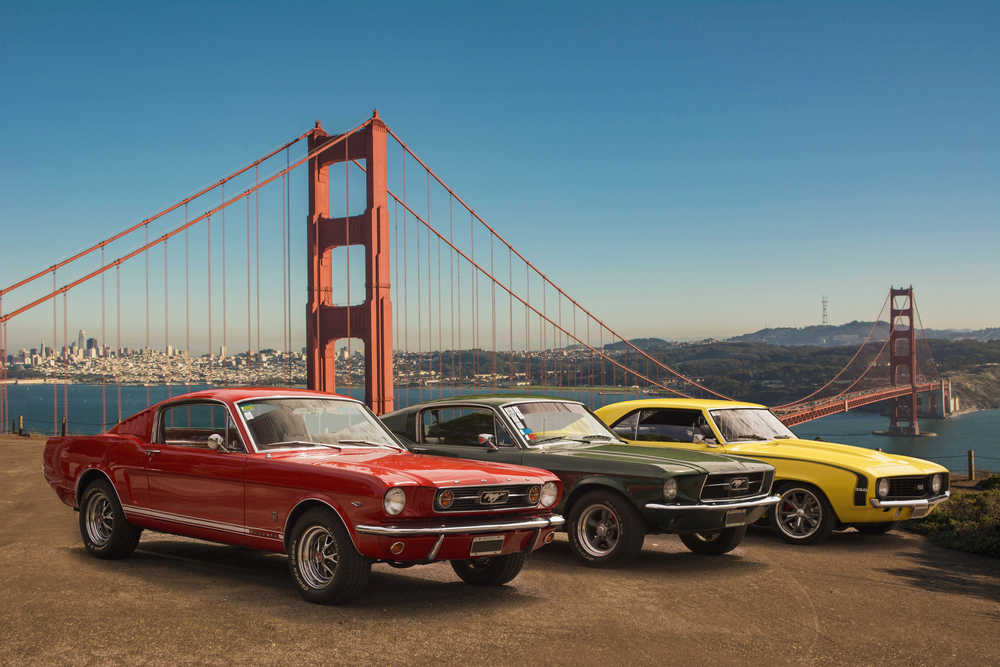Introduction
A pillar of American automotive culture, muscle cars combine strength, speed, and historical significance in a way that is unmatched. Muscle cars have enthralled enthusiasts with their roaring engines and iconic designs for a number of generations. We take a look back at the rich history of muscle cars in this blog, following their rise from modest origins to legendary status. We examine the diverse tapestry of creativity and craftsmanship that defines the world of muscle cars, from the ground-breaking models that defined an era to the timeless icons that still awe us today. Come celebrate the enduring legacy and cultural impact of these automotive marvels on American society as we explore their roaring engines, sleek lines, and timeless appeal.
The Birth of Muscle Cars: The muscle car era, typified by high-performance vehicles with powerful engines and eye-catching designs, began in the 1960s. Manufacturers vying for the attention of speed enthusiasts included Ford, Chevrolet, and Dodge. It is widely acknowledged that the 1964 Pontiac GTO’s release was a turning point in the history of muscle cars. Drivers looking for thrilling experiences on the open road were drawn to the GTO because of its powerful V8 engine and affordable price. With its introduction, a cultural phenomenon that would influence the future of the automobile industry for many years began.

Iconic Models: A number of legendary models that have left their mark on automotive history adorn the landscape of muscle cars. When the Ford Mustang was first introduced in 1964, it broke through expectations with its svelte styling and wide range of customization options, creating a new benchmark for the sector. The Dodge Charger, Plymouth Barracuda, Pontiac Firebird, and Chevrolet Camaro also became iconic vehicles during the heyday of muscle cars. Every model offered a unique combination of features and performance characteristics, satisfying the interests of a broad range of enthusiasts and cementing their status as icons in the history of outstanding automobiles.
Performance and Innovation: Muscle cars represented unmatched performance as well as svelte styling. Manufacturers have continuously pushed the limits of engineering to create engines with incredible horsepower and torque ratings. Automobiles like the Shelby Mustang, Dodge Challenger SRT Demon, and Chevrolet Corvette Stingray are excellent representations of this unrelenting quest for power. In addition to shattering speed and acceleration records, these high-performance versions went on to become legendary on the drag strip and the open road. Entertaining enthusiasts with awe and admiration, their formidable presence and blistering performance cemented their status as icons of automotive excellence. Muscle cars were more than just automobiles; they were engineering marvels that demonstrated the manufacturers’ unwavering commitment to creating the best possible driving experience.
Cultural Impact: In addition to their remarkable technical prowess, muscle cars made a lasting cultural impact by representing concepts of liberty, disobedience, and the essence of the American dream. These recognizable cars cemented their place in popular culture by appearing as major characters in motion pictures, TV series, and musical compositions. From the legendary Dodge Charger in “The Dukes of Hazzard” to Steve McQueen’s Ford Mustang in “Bullitt,” muscle cars have captivated viewers’ attention all over the world. They evoked a sense of adventure and adrenaline that struck a deep chord with both casual viewers and enthusiasts because they personified the excitement of the open road. Muscle cars evolved from being mere machines to becoming symbols of aspiration, independence, and the enduring appeal of the American automotive dream thanks to their representation in a variety of media.
The Decline and Revival: The 1970s oil crisis and strict emissions laws presented serious obstacles for the muscle car industry, which led to a drop in output and performance. For many iconic models, this was the end of an era, and enthusiasts were left in mourning over the passing of their beloved vehicles. Still, the spirit of the muscle car persisted. In response, manufacturers brought back vintage models in the twenty-first century, adding contemporary features and improving performance. Triumphantly making their comebacks, the Ford Mustang, Chevrolet Camaro, and Dodge Challenger not only drew in a new generation of fans but also rekindled the passion of longtime enthusiasts. These restored vehicles honor their history while utilizing modern engineering, guaranteeing that the muscle car legacy endures for many more years.
The Future of Muscle Cars: Future prospects for muscle cars appear bright, as new opportunities are created by technological advancements. The advent of hybrid and electric versions, such as the Ford Mustang Mach-E and the Tesla Model S Plaid, represents a move in the direction of sustainability without sacrificing the thrilling performance that is associated with muscle cars. These cutting-edge automobiles show that the core qualities of muscle cars power, speed, and excitement can still be successful in a time when auto trends are constantly changing. One thing hasn’t changed as the industry develops: muscle cars’ timeless appeal. Their blend of tradition and innovation will continue to entice enthusiasts, and their timeless appeal and capacity to change with the times will guarantee that they will be treasured components of automotive culture for many generations to come.

Conclusion
In summary, muscle cars represent a decades-long history of creativity, skill, and dedication and are timeless representations of American automotive brilliance. With their unmatched power, speed, and timeless appeal, these iconic machines have captivated enthusiasts worldwide from their inception in the 1960s to their renaissance in the modern era. We acknowledge the significant influence muscle cars have had on influencing automotive culture and motivating a new generation of enthusiasts as we consider their history. Muscle cars serve as a constant reminder of the spirit and inventiveness of American engineering with every mile driven and engine roar. God bless the muscle car, a timeless symbol of the quest for automotive perfection.

